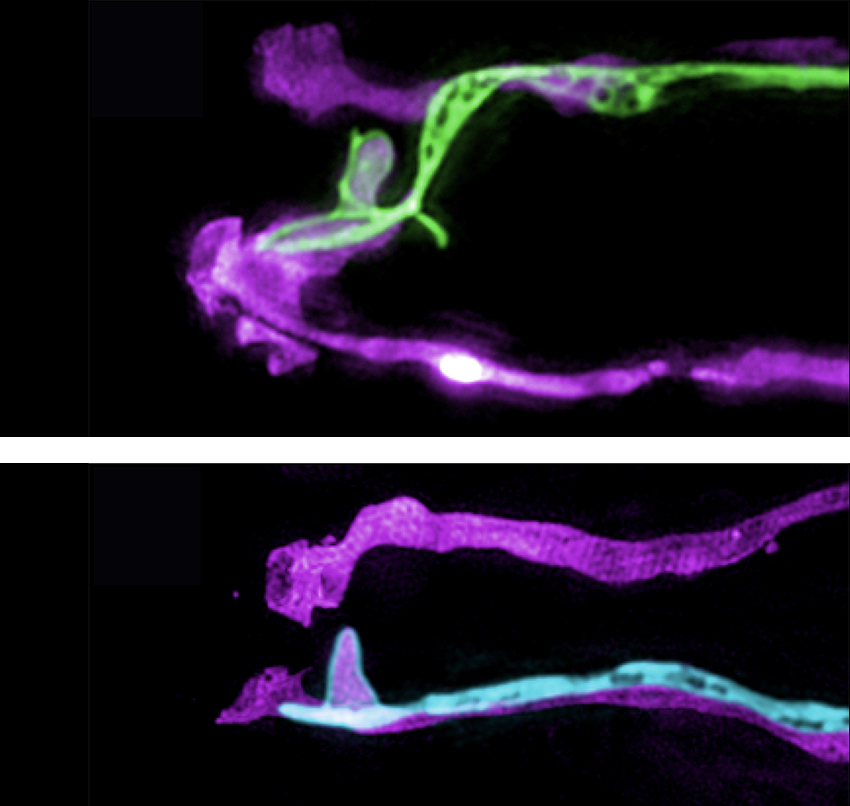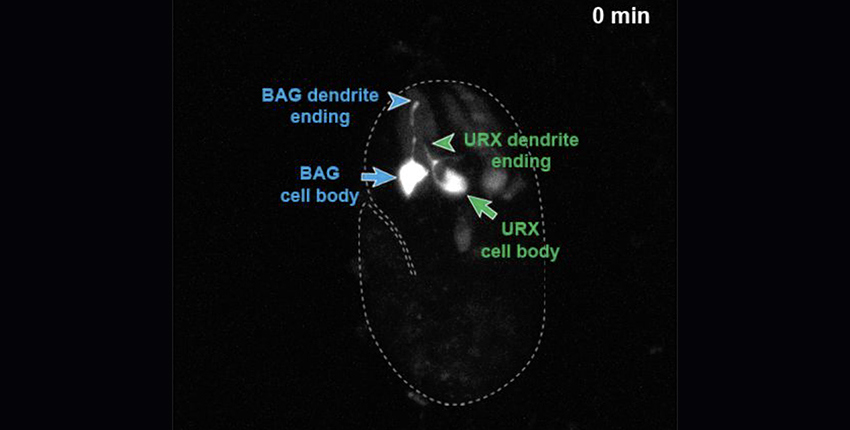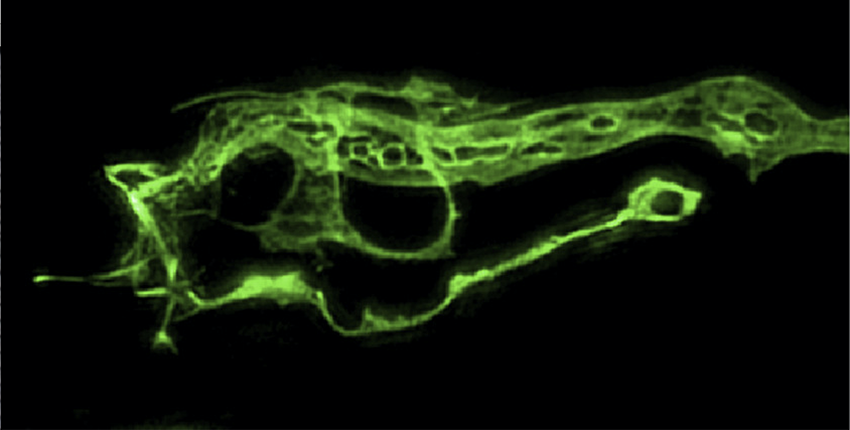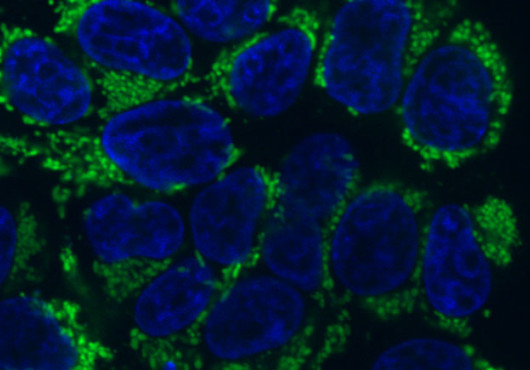
A Caenorhabditis elegans worm squirms its way through a compost heap, sensory neurons in its nose helping it navigate oxygen and carbon dioxide cues as it searches for food.
The lab of Harvard Medical School geneticist Max Heiman studies these neurons to illuminate nervous system development and uncover clues about how things go awry in humans, leading to neurodevelopmental disorders and neurodegeneration.
In its latest finding, reported online in Development, Heiman’s group discovered a new way that these neurons and their sensory endings, called dendrites, grow.
The team found that the carbon dioxide-sensing neuron, BAG, shown above in blue, and the oxygen-sensing neuron, URX, shown in green, attach first to the developing worm’s nose, then stretch backward as the embryo grows and lengthens—a process known as retrograde extension.
“We’ve seen this kind of ‘backwards’ dendrite growth before in C. elegans, but URX and BAG are doing it with different molecules,” said Heiman, associate professor of genetics and of pediatrics in the Blavatnik Institute at HMS and Boston Children’s Hospital, and senior author of the study. “Retrograde extension has recently been seen in zebrafish as well. How many ways of doing it are there?”
Even more striking, the researchers revealed that URX and BAG attach to the same glial cell (shown in purple) in the nose.
In humans, neurons intertwine with hundreds of billions of glia—helper cells that play important roles in brain development and disease. Thanks to the relative simplicity of C. elegans and access to super-resolution microscopy, Heiman’s team was able to pinpoint for the first time in living worms the connection made between two individual neurons and a single glial cell.
“The real step forward here is being able to ask at the single-cell level how a glial cell interacts with its neuronal partners,” said Heiman.
As a graduate student in the Heiman lab, study co-first author Elizabeth Cebul learned from staff in the HMS Cell Biology Microscopy Facility how to use advanced techniques called structured illumination and light-sheet microscopy. The results led the team to propose that their glial connections allow URX and BAG to anchor in the nose and extend backwards.
“We think these neurons are attaching to glia in order to develop correctly,” said Cebul.





